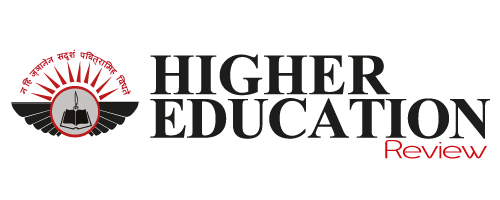The Strategic Value of Articulation Agreements in Education
 College transfers should be a bridge, not a barrier, and yet, transferring still wastes time and money. Transfer students from the U.S. often lose about half their credits, which mean repeating courses and spending more time to finish. Colleges are thus turning to articulation agreements, formal maps that tell students in advance which courses will count toward their next program.
College transfers should be a bridge, not a barrier, and yet, transferring still wastes time and money. Transfer students from the U.S. often lose about half their credits, which mean repeating courses and spending more time to finish. Colleges are thus turning to articulation agreements, formal maps that tell students in advance which courses will count toward their next program.
The Transfer Problem and Why It Matters
Nearly 500,000 students moved from two-year to four-year colleges in fall 2024, reversing the pandemic decline, which is down by about 2,300 students, shared by the National Student Clearinghouse. In addition, the number of students transferring grew from 13.1% in 2024, up from 11.9% in 2020. But under one-third of 2016 community-college starters transferred within six years, and only about half finished a bachelor’s program. These figures show how credit loss on transferring slows down students' academic journey.
When credits do not apply to a major, students often repeat coursework, pay more, and spend longer to finish. The U.S. Government Accountability Office found average credit losses equivalent to roughly a semester of full-time study. Advising gaps and opaque information compound the problem, particularly for first-generation and working learners.
Successful Articulation Agreements across the Globe
Well-designed articulation agreements make transfer clear and predictable. They list matching courses, set GPA or prerequisite rules for guaranteed or conditional entry, and show how co-ops, apprenticeships, capstones, and industry certificates count for credit. This is consistent with quality guidance in systems like Australia’s, where the regulator notes that credit, granted via articulation, Recognition of Prior Learning, or transfer, reduces the learning required to achieve a qualification when outcomes are equivalent.
There is evidence that strong transfer ecosystems deliver. In British Columbia’s province-wide system, a 2025 analysis of public universities found BC transfer students completed at higher rates than direct-entry peers over comparable windows (75% vs 67%), posted higher average GPAs after 15 credits at most receiving universities, and finished in about the same time once they reached junior standing.
In Ontario, a 2023 survey of college-to-university movers found 72% were offered transfer credits through an articulation agreement, and the presence of a mapped pathway significantly influenced their decision to continue.
ONCAT’s ongoing initiatives further standardize information and expand pathway options across colleges, universities, and Indigenous Institutes.
However, caution remains. Research from the Aspen Institute and the American Council on Education shows that agreements focused only on “credit in” can still leave students with electives that don’t satisfy major requirements. The fix is deeper alignment, program-level maps, regular reviews with departments, and outcomes tracking on time-to-degree and completion.
Articulation agreements used to be back-office documents. Today, they are front-door guarantees, clear maps that save students time and money while giving employers the skills they asked for. For institutions, this is an invitation. Co-design credit maps with academic departments and employers, recognize industry micro-credentials where appropriate, and make co-ops and apprenticeships count. Transfer should feel like the shortest lane to a first job, not a detour.
What Comes Next
Articulation agreements lower the risk and time to degree for students. They increase completion and yield for colleges and universities. They give employers early access to talented workers. They also make results auditable and transparent for policymakers. Scaling from individual transactions to networked, portable learning is the way of the future, as demonstrated by programs like BCCAT and ONCAT.
Systems are moving in this direction. Latest transfer indicators point to renewed mobility after the pandemic, while Canadian provincial bodies such as BCCAT and ONCAT publish credit maps and performance studies at scale. Together, they illustrate how regional credit-transfer infrastructure can shift from individual deals to a network effect of portable learning.
The new standard is transparency. Students should know what transfers do, how long a degree will take, and what work experience is built in. That clarity is how we rebuild trust in higher education.

.jpg)